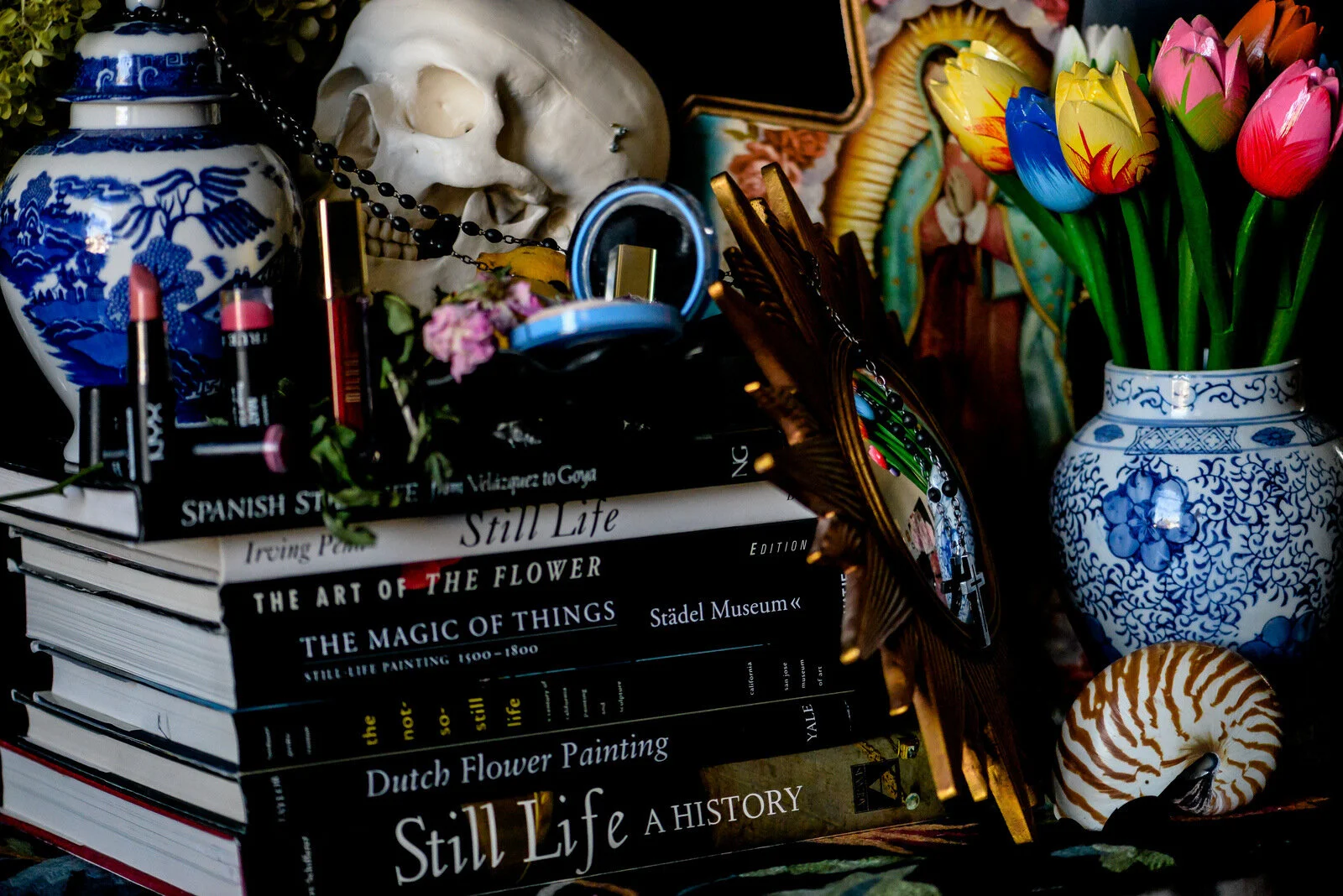Beautyship
If I had it to do all over again, I would have figured out a way to become a painter, a photographer, and a writer. The writing was always going to happen. But we don’t get to be everything, most of us. It’s digital photography though, that really suits me the best, and it’s a relatively recent art form. No matter. Here we are. I’ve been interested in the work of Audrey Flack again. She’s not new to me — we’ve had books on her for ages, and she appears in many of the still life and books on realism that Rob has in his art library. But I’ve been thinking about the way she uses colour and how she often painted make-up.
And then I’ve always loved Irving Penn’s beauty photographs.
The theme of memento mori is a pretty common go-to in still life. And of course, the passing of time, and beauty, also go hand in hand. In traditional still life, flowers, mirrors, skulls, all represent the ideas in memento mori.
There are a number of poems about makeup, though I was surprised not to find more. Sharon Olds wrote one on not wearing makeup beginning:
Maybe one reason I do not wear makeup is to scare people.
If they’re close enough, they can see something is different with me,
something unnerving, as if I have no features,
I am embryonic, pre-eyebrows, pre-eyelids, pre-mouth,
I am like a water-bear talking to them,
or an amniotic traveller,
a vitreous floater on their own eyeball,
human ectoplasm risen on its hind legs to discourse with them.
“Makeup” by Dora Malech begins:
My mother does not trust
women without it.
Here’s another one that is all for makeup by Sha’Condria Sibley.
Sharon Olds uses the word “beautyship” which isn’t in the dictionary or at least not mine. Is it used like apprenticeship? or more like her ladyship? her worship? her beautyship? Are we apprentices to beauty?
I do understand the fear of the salon she talks about though.
And then there’s the power and the privilege associated with makeup and the reams of cash it costs. It can also bring joy, as we’ve talked about here before. It’s something I want to explore more in the form of the still life, and yes, probably in an essay, too. Thanks, as usual, for bearing with, as I muddle through.








